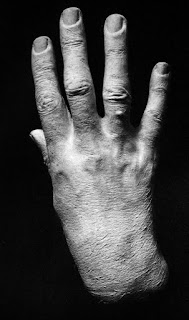 |
| Chopin's left hand |
 |
| Stephen Heller (1813-1888), pianist, teacher, composer and student of Carl Czerny |
 |
| Edward Dannreuther (1844-1905). |
 |
| Liszt's hand |
Everyone at the time seemed inspired for virtuosity by the violin playing of Nicolo Paganini, the ill-fated Robert Schumann among them. Rumors abound even now regarding the attempts he made to
 |
| Dactylion, the sort of device Schumann may have used for "strengthening" his fingers, resulting in the end of his piano career. |
So, dear colleagues, we must endeavor to make the best of our genetic predisposition. If you have webbing between your fingers, don't despair. We have other means of achieving flexibility; we use our limbs according to their design and avoid extremes of motion. Besides, with bad genes we have yet another issue to blame on our parents. Take joy in that.
1 comment:
Search engine optimization has become the thorn from on-line
marketing and advertising pros facet. In fact, companies who are not currently
using expert e-marketing services to help
them together with their own online marketing have not all incorporated regional into their websites and marketing, meaning they're most
likely currently becoming penalized now from the search engines.
Post a Comment